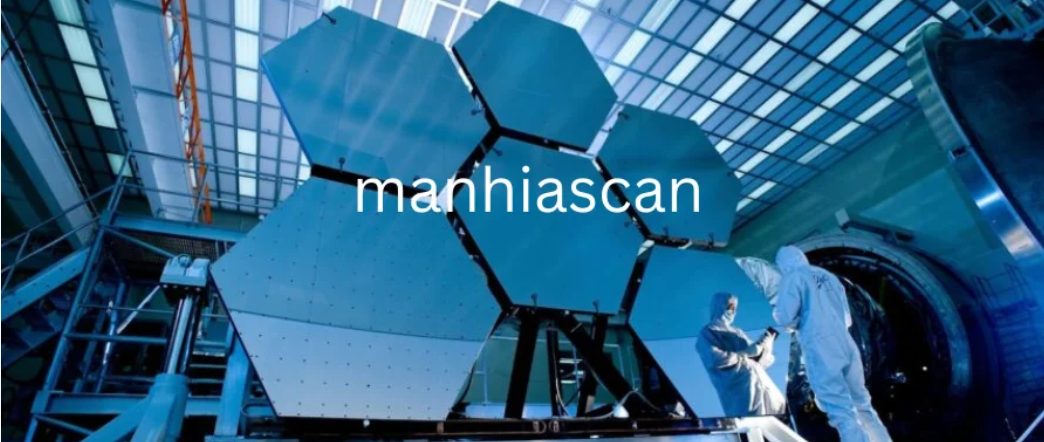Medical imaging has taken monumental strides in recent years, but one name has begun to stand out more than most: Manhiascan. This innovative diagnostic tool has the potential to revolutionize how doctors and medical professionals approach patient care. In an age where non-invasive and highly accurate medical diagnostics are becoming essential, Manhiascan positions itself as the next big leap in technology.
In this article, we’ll dive deep into what makes Manhiascan unique, how it works, its applications, and the potential it holds for the future of healthcare.
What is Manhiascan?
Manhiascan is an advanced medical imaging technology designed to provide detailed diagnostic results through non-invasive scanning methods. Unlike traditional imaging systems, such as X-rays or MRIs, Manhiascan boasts high-resolution capabilities while being faster and less harmful to the body. This technology utilizes a specialized form of scanning that offers precision imaging without the need for contrast agents or excessive radiation exposure.
The core appeal of Manhiascan lies in its ability to detect abnormalities in tissues, organs, and other critical areas in the human body with impressive accuracy. This allows medical professionals to diagnose conditions at an earlier stage, providing patients with better prognoses and more treatment options.
Why is Manhiascan a Game Changer?
The world of medical diagnostics is constantly evolving, but few innovations promise the impact that Manhiascan offers. Here are some reasons why this technology is poised to change the future of healthcare:
- Non-Invasive Diagnostics: Many imaging techniques still require invasive procedures or introduce substances into the body. eliminates this need, making it safer for patients.
- Rapid Results: Unlike other methods that may take hours or even days to yield results, provides almost instant feedback, reducing the wait time for both patients and healthcare providers.
- Enhanced Precision: The level of detail that provides is unparalleled, allowing for the identification of even the smallest irregularities that other systems might miss.
- Lower Radiation Exposure: Traditional imaging systems, especially X-rays and CT scans, expose patients to radiation. Manhiascan reduces this exposure significantly, minimizing potential long-term risks.
How Does Manhiascan Work?
Manhiascan uses advanced imaging technology to create detailed pictures of the inside of the human body. While traditional systems rely on electromagnetic radiation, utilizes a sophisticated algorithm that processes and enhances the natural signals emitted by the body. These signals are then captured by sensors and translated into high-resolution images.
The system’s non-invasive nature is key to its success. There is no need for needles, dyes, or any other external agents, making it less stressful for patients. The scan typically takes less than 15 minutes, and results can be viewed by doctors almost immediately.
Applications of Manhiascan
Manhiascan is incredibly versatile, finding applications across various fields of medicine. Here’s a closer look at some of its key uses:
Oncology
Cancer detection is one of the most critical uses of . With its ability to identify abnormalities in soft tissues and detect early signs of tumors, this imaging system is invaluable for oncologists. Unlike traditional scans, which may miss early-stage tumors, offers superior clarity, allowing for earlier interventions.
Neurology
The brain is one of the most complex organs in the body, and diagnosing neurological issues can be challenging. precision imaging is perfect for identifying abnormalities in brain tissues, aiding in the early diagnosis of conditions like Alzheimer’s, strokes, and brain tumors.
Cardiology
Heart conditions often go undiagnosed until they become severe. offers cardiologists a clearer view of heart tissues and blood vessels, enabling the detection of heart diseases such as atherosclerosis, aneurysms, and congenital heart defects.
Orthopedics
From diagnosing bone fractures to assessing the condition of joints, is an essential tool in orthopedics. It allows doctors to monitor healing progress without the need for repeated X-rays, which can expose patients to unnecessary radiation.
Gastroenterology
Digestive issues can be notoriously difficult to diagnose. helps gastroenterologists visualize the intestines, stomach, and other digestive organs, identifying problems like ulcers, inflammatory diseases, and cancers with ease.
The Benefits of Manhiascan for Patients
The appeal of extends far beyond its technical capabilities. Patients stand to gain significantly from this technology:
- Faster Diagnosis: A quicker diagnosis leads to earlier treatment, and in many cases, this can make all the difference in a patient’s recovery.
- Comfort: Since does not involve invasive procedures or the need for contrast dyes, patients experience greater comfort and less anxiety during the scanning process.
- Safety: With reduced radiation exposure and no need for potentially harmful chemicals, Manhiascan is one of the safest imaging options available today.
- Convenience: The speed and efficiency of mean fewer trips to the hospital and quicker appointments, saving patients time and reducing the burden on healthcare facilities.
How Manhiascan is Transforming Healthcare
Manhiascan represents the future of medical diagnostics. Its precision, speed, and non-invasive nature make it a game-changing technology for hospitals and clinics around the world. As healthcare systems continue to evolve and focus on preventative care, tools like will become increasingly important.
Beyond individual patient care, this technology also holds promise for improving public health. By providing faster and more accurate diagnostic tools, Manhiascan can reduce the overall cost of healthcare by enabling earlier interventions and preventing diseases from progressing.
Moreover, as the technology becomes more widely available, even remote or underdeveloped regions can benefit. Portable versions of could be deployed in rural areas, bringing advanced diagnostic capabilities to places where they were previously inaccessible.
The Future of Manhiascan: What’s Next?
While Manhiascan is already making waves in the medical community, there’s still plenty of room for growth. Ongoing research and development will likely lead to even better imaging capabilities, smaller devices, and broader applications.
Imagine a future where technology is so advanced that it can be used in routine check-ups, providing real-time scans during a doctor’s visit. Such a scenario could dramatically shift how healthcare is delivered, with fewer invasive procedures and faster responses to health issues.
Common Questions about Manhiascan
How does Manhiascan compare to MRI or CT scans?
Manhiascan offers higher precision than traditional MRI and CT scans, especially for soft tissue imaging. It also exposes patients to less radiation compared to CT scans and does not require contrast dyes like MRIs often do.
Is Manhiascan safe for everyone?
Yes, Manhiascan is safe for most patients, including those who may not be eligible for other types of scans due to allergies to contrast agents or concerns about radiation exposure.
How long does a Manhiascan take?
A typical Manhiascan takes around 15 minutes, though the exact time may vary depending on the specific area being scanned.
Can Manhiascan detect cancer?
Yes, Manhiascan is particularly effective in detecting early-stage tumors and other abnormalities, making it an essential tool in oncology.
Will insurance cover Manhiascan?
As Manhiascan becomes more widespread, many insurance providers are expected to cover it, especially when used in place of more traditional imaging techniques.
Where can I get a Manhiascan?
Currently, Manhiascan is available in select medical centers and hospitals. As the technology grows in popularity, it is expected to be rolled out to more facilities worldwide.
Conclusion
Manhiascan is not just another medical imaging tool; it’s a revolutionary step forward in the field of diagnostics. With its non-invasive nature, high precision, and rapid results, it offers countless benefits for both patients and healthcare providers. As the medical world continues to embrace technological advancements, stands at the forefront, offering a glimpse into the future of healthcare.










